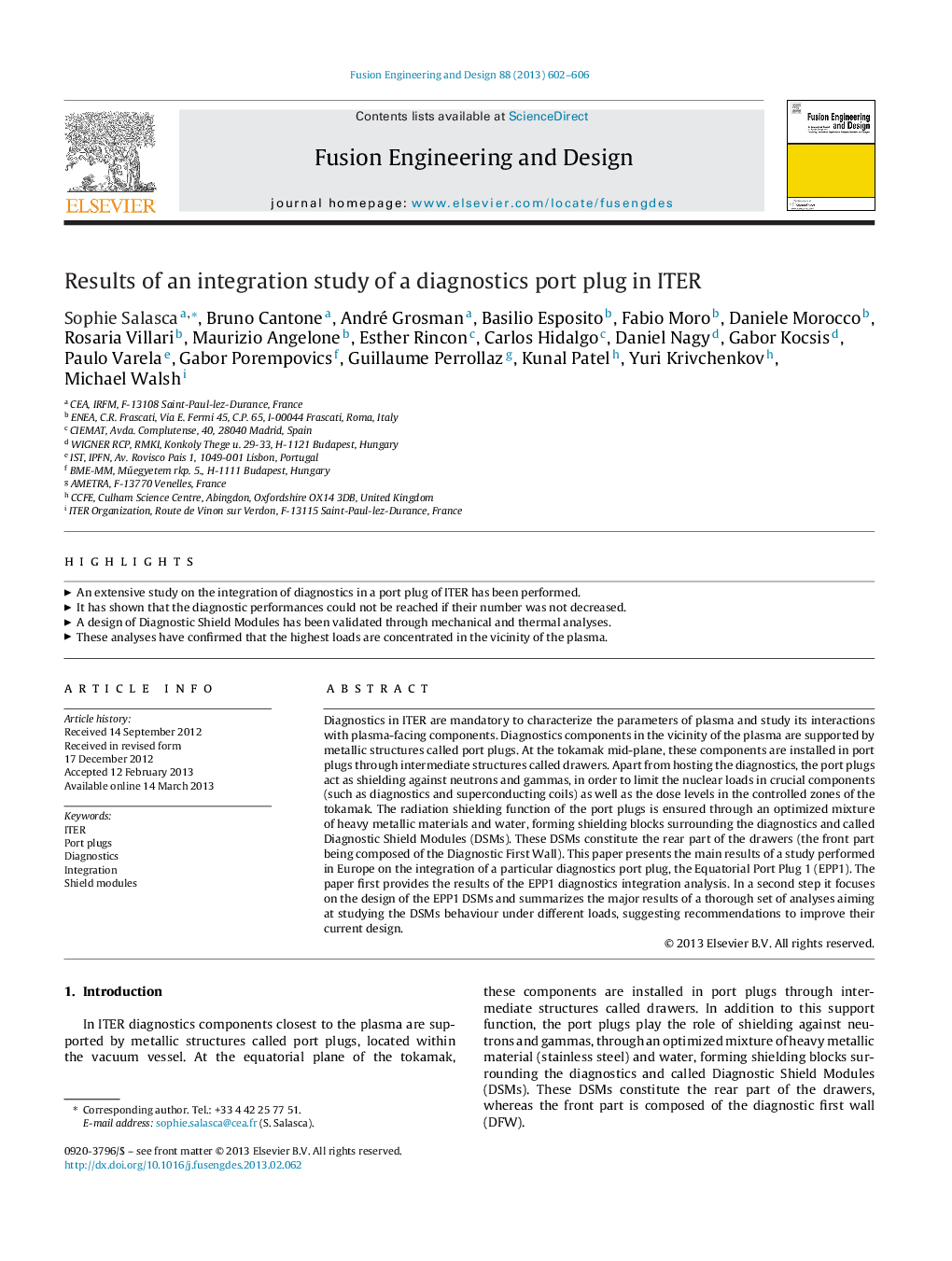| Article ID | Journal | Published Year | Pages | File Type |
|---|---|---|---|---|
| 271729 | Fusion Engineering and Design | 2013 | 5 Pages |
Diagnostics in ITER are mandatory to characterize the parameters of plasma and study its interactions with plasma-facing components. Diagnostics components in the vicinity of the plasma are supported by metallic structures called port plugs. At the tokamak mid-plane, these components are installed in port plugs through intermediate structures called drawers. Apart from hosting the diagnostics, the port plugs act as shielding against neutrons and gammas, in order to limit the nuclear loads in crucial components (such as diagnostics and superconducting coils) as well as the dose levels in the controlled zones of the tokamak. The radiation shielding function of the port plugs is ensured through an optimized mixture of heavy metallic materials and water, forming shielding blocks surrounding the diagnostics and called Diagnostic Shield Modules (DSMs). These DSMs constitute the rear part of the drawers (the front part being composed of the Diagnostic First Wall). This paper presents the main results of a study performed in Europe on the integration of a particular diagnostics port plug, the Equatorial Port Plug 1 (EPP1). The paper first provides the results of the EPP1 diagnostics integration analysis. In a second step it focuses on the design of the EPP1 DSMs and summarizes the major results of a thorough set of analyses aiming at studying the DSMs behaviour under different loads, suggesting recommendations to improve their current design.
► An extensive study on the integration of diagnostics in a port plug of ITER has been performed. ► It has shown that the diagnostic performances could not be reached if their number was not decreased. ► A design of Diagnostic Shield Modules has been validated through mechanical and thermal analyses. ► These analyses have confirmed that the highest loads are concentrated in the vicinity of the plasma.
